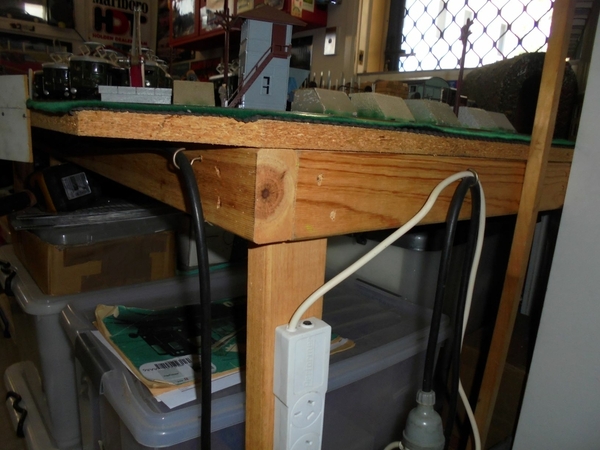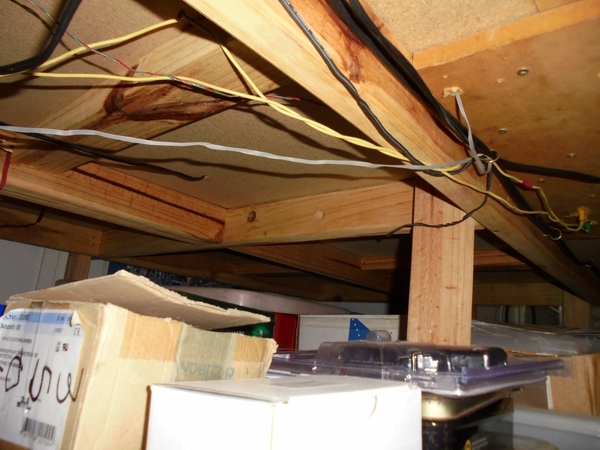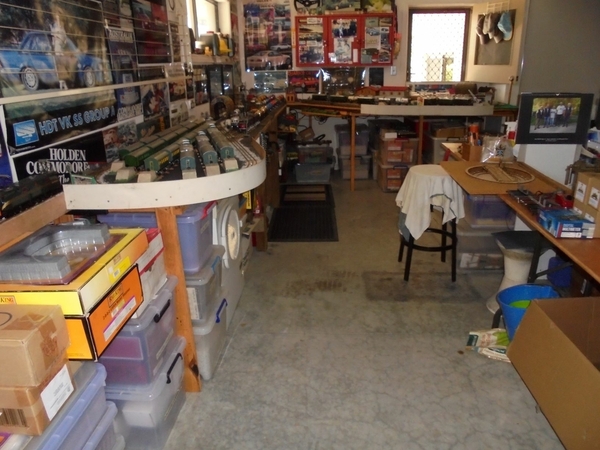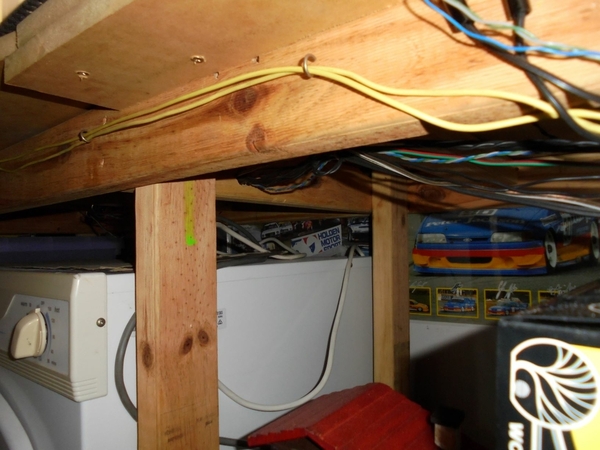Afternoon Alan (and Ray):
Great to hear from some fellow 3 rail "O" gaugers here in Australia.
I built my benchwork using 70 x 35 framing pine you get at Bunnings (for the Americans.....it's just like a Home Depot store). I used it for the legs, fascia bearers, and the intermediate joists/trimmers.
Installed on-edge, it is quite strong, and as long as your spans don't exceed 900mm (3ft) it will support all the train weight you will ever put on it. Trust me, I have one area that is a freight holding yard, with multiple track stacked end-for-end with engines and freight cars.
I have an "L" shaped layout that I added to my old original workshop bench, toward the rear of my third car garage. I installed new 19mm thick particleboard over the top of the old workbench (I don't need to do anymore work on it anymore), and built the new pine timber framework at each end to match the height of the old workbench.
Being a QC (qualified carpenter) I already had my 75mm framing gun, and I used it to put the timber framework together. I then screwed the particleboard top down to the frame, and added extra "noggins" where sheets joined, to fully support them.
Come the cooler winter months I intend to completely dismantle the existing layout and re-build it much larger, and with longer straights and bigger curves to accommodate some of the huge MTH steam loco's I have acquired over the past year. I sold the race car that occupied the space in the 3rd garage last year, so I now have complete freedom on the size and shape of the new layout. My wife just rolls her eyes, and goes back into the house.
Anyway, I have included some photos of the existing benchwork for you to get an idea of how I put the framework together.
Peter (Buco Australia) on the fabulous Gold Coast in sunny Queensland, Australia.














